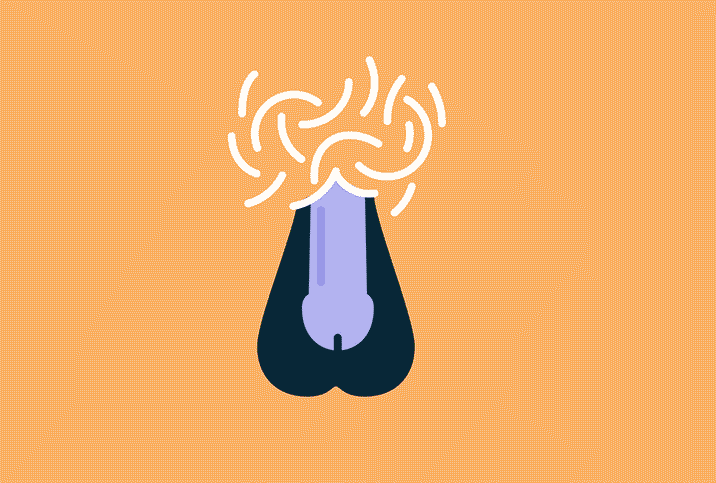Holy 'Mosis: How to Avoid Two Potentially Serious Foreskin Problems

People have feelings about foreskin, but the last one anyone wants to associate with it is pain.
For uncircumcised men, the risks associated with phimosis and paraphimosis should encourage a more diligent attitude toward cleaning and caring for this part of the penis. Of course, care for the head of the penis is vital for all penises, circumcised or not, but these conditions can lead to serious discomfort or even medical emergencies for uncut men if action isn't taken.
What are phimosis and paraphimosis?
Phimosis and paraphimosis affect the normal function of the foreskin while retracting it and replacing it over the head of the penis, respectively.
"So phimosis is a tightening of the foreskin and not being able to fully retract it, or it's tight when you fully retract it," said Marah Hehemann, M.D., a urologist and an assistant professor at the University of Washington in Seattle who researches and advocates for men's health and general urology. "And paraphimosis...is when the foreskin is retracted and then gets too tight to replace over the glans. And it is an emergency because it can cause ischemia to the glans."
Ischemia is a shortage of oxygen in cell tissue that results from a restricted blood supply. Ultimately, this can lead to a number of negative consequences, including severe infection or other damage to the tip of the penis, as well as the development of gangrene, which might result in the loss of the tip of the penis.
The timeline for this state of emergency varies based on a number of factors, such as how tight the foreskin gets and whether the person has significant vascular disease, the latter of which makes it more of an emergency than it might be for a healthier person, according to Hehemann.
Circumcision is not the first option
If you're an uncircumcised adult who is now ready to run to the nearest urology office for a circumcision, slow down. The procedure might not be the right solution to your newfound paraphimosis fears.
Once a person reaches adulthood, circumcision is really only recommended in certain circumstances, according to Matthew Mutter, M.D., a urologist in the New Orleans area.
"Circumcision is, in the absence of a couple of medical issues—such as phimosis, which is the inability to retract the foreskin, and paraphimosis, which, honestly, is considered an emergency—really a cosmetic procedure," he said, referring to use of the procedure for males older than 18.
Pay attention to these conditions
Fortunately, there are significantly less severe options than circumcision to consider if you want to be proactive about avoiding the possible development of phimosis or paraphimosis.
"To avoid phimosis, you want good hygiene," Mutter explained. "So you want to retract the foreskin daily in the shower, clean around the glans, the head, and then dry everything nice and then pull the foreskin back over. Every time you urinate, you want to retract the foreskin. You don't want to urinate through the foreskin, which is something that I see all the time. It's amazing to me."
Additionally, men with unique general health conditions may not realize how the management of those conditions could affect the long-term health of the penis.
"For diabetic men...you want good glucose control, because when you have high blood sugar, you can get yeast infections, and yeast infections can scar the foreskin and make it very difficult to retract," Mutter said. "And then once a nice little scar around the foreskin forms, it's somewhat difficult to retract in the absence of an intense amount of pain."
Ultimately, hygiene is an uncircumcised man's best friend. That is, if you want the cell tissue of your penis to remain intact.
Habits that could lead to circumcision
If you develop habits that contribute to the likeliness of these conditions forming, that's when an elective procedure such as circumcision may be worth considering.
Mutter knows some uncircumcised men keep their foreskin pulled back regularly, which is not an advisable practice. This can cause the head of the penis to swell and trap the foreskin behind the head, which requires prompt treatment because the consequences can be severe: from bad infections to necrosis of the glans.
"Any man who comes to me, or if I get consulted in the emergency room for paraphimosis, we reduce it, which is to pull the foreskin back over the head of the penis," he added. "Often, these men need to be sedated for that. And then I basically tell the guy, 'Listen, we need to really do a circumcision on an elective, nonurgent basis.'"
If you have questions about how to properly handle your foreskin, it's best to direct them to your doctor. If you don't have an established urological resource, your primary care doctor may be able to answer questions and/or refer you to a specialist in that area.


















